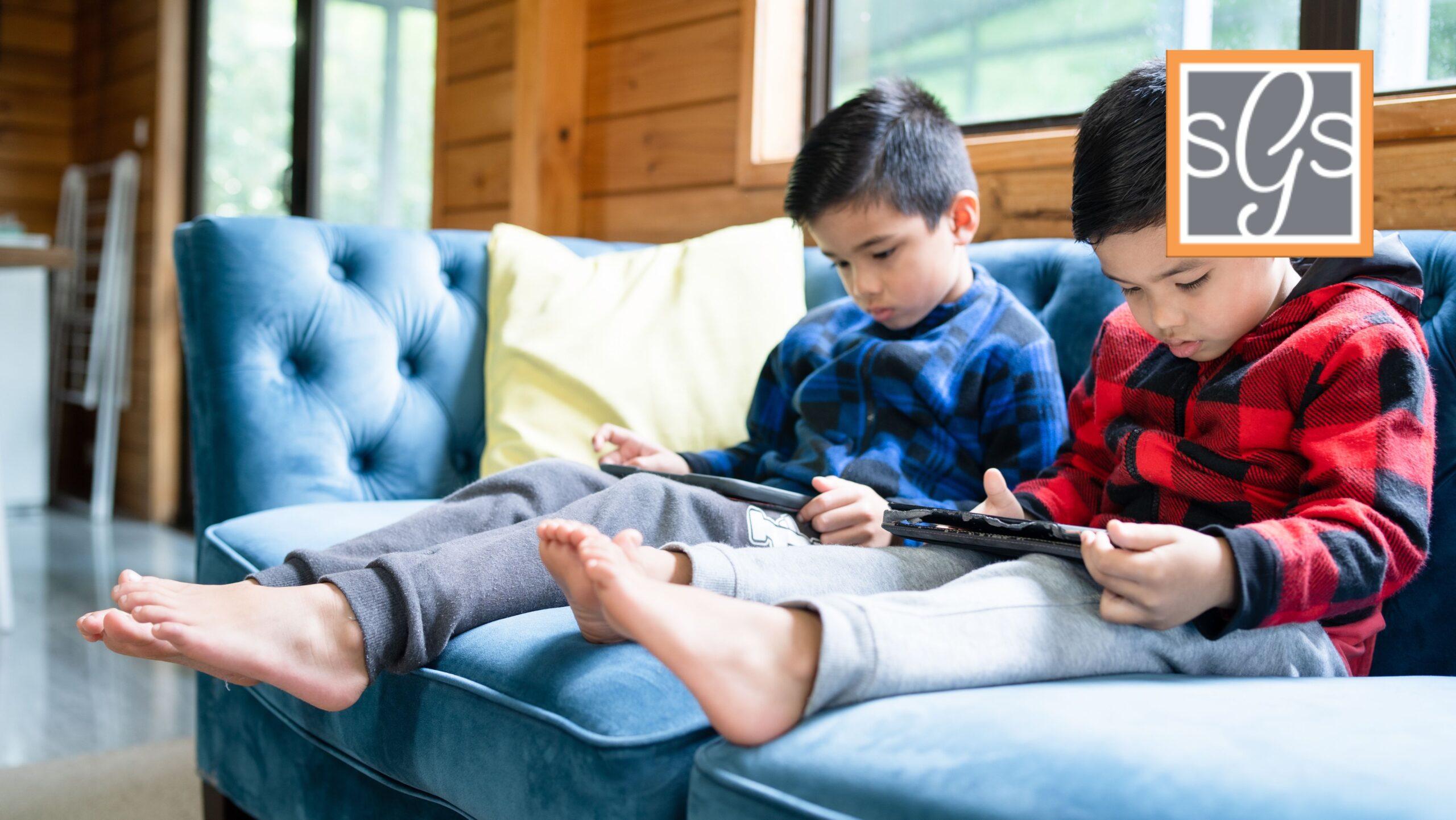Screen Time Tips and Guidelines for Healthy Digital Media Usage
Written by Gillian Lao
Do you or your children spend too much time on screens? Do you feel like you’re all missing out on other things in life because of too much screen time? Is screen time affecting the mental health or well-being of you or your family members? If you answered yes to any of these questions, don’t worry, you’re not alone. Many of us struggle to find the right balance between screen time and other activities. Screen time and digital devices can be beneficial when it comes to learning, entertainment and communication, however, too much screen time can have negative impacts on physical and mental health. It’s especially important to monitor the amount of screen time that children are consuming. We recommend following the guidelines below for appropriate media usage at various ages. It’s also important to understand the difference between active and passive screen time, the signs of digital dependency, and how to make positive changes to screen time habits.
Smart Gen Society Screen Time Guidelines:
- Under 18 months: Avoid screen time other than video-chatting.
- Age 18-24 months: Find high-quality programming (if you choose to introduce screen time) and watch or play together.
- Age 2-5: Limit screen use to one hour per day of high-quality programs.
- Ages 6-17: Limit recreational screen time to less than 3 hours per day.
- Adults: Aim to keep recreational screen time to no more than 2-4 hours per day.
Active vs. Passive Screen Time
All screen time is not equal. It’s important to be mindful of the type of screen time being consumed, especially for children. Active screen time is when you are cognitively, educationally, or physically engaging in activities with the use of a screen. Examples include educational apps, FaceTime chats, fitness videos or active games. Passive screen time includes physically and cognitively sedentary use of screens to calm, subdue, or “unplug.” Examples are watching YouTube, TV shows, or movies and mindless scrolling. While some passive screen time is certainly fine for adults and older children, active screen time is far more beneficial for mental and physical health. We recommend limiting passive screen time usage and choosing more active and meaningful screen time activities. We also want families to rediscover the many screen-free joys like reading, playing games, and spending time with friends and family in real life.
Signs of problematic use.
Screen time acts like a digital drug that floods the brain with dopamine, the “feel-good” chemical that is released when we experience rewards, making it crave more stimulation and reducing its natural ability to self-regulate. Screen time affects the brain in similar ways as cocaine or sugary foods and both kids and adults can become addicted. Be sure to watch for the following signs of digital addiction and adjust allotted screen time as necessary. These can include:
- Excessive gaming or screen time
- Decrease in school or work performance
- Poor personal hygiene
- Social withdrawal
- Lying about media use
- Choosing tech over other activities
How to make changes to screen time.
Making adjustments to a child’s (or adult’s) screen time can be disruptive, so be sure to have other activities prepared to fill the time usually spent on screens. Schedule time with friends, take up new hobbies, and plan to get outdoors. Removing devices from the physical space will also help transition away from screens. There are even products on the market that can be used to “lock-up” smartphones or tablets. These work great for mealtimes and overnight. Be sure to communicate these changes and the reasons associated with them to your child prior to making them. Let them know it’s not a form of punishment, but a way for better balance in life.
We also encourage taking advantage of the Do Not Disturb & Focus features on Smart devices. These tools will allow you to decide who, and what can interrupt you during different times of day. This can be especially helpful at work, school, and during times when you need a break from notifications. It is healthy and okay to be in Do Not Disturb mode, and we highly recommend it for your mental health.
How to Find Do Not Disturb on Apple:
- Swipe down from the top right of your screen to open your Control Center.
- Press and hold the Focus section.
- Tap Do Not Disturb.
How to Find Focus Features on Apple:
- Open your Settings app.
- Tap Focus.
- From there, you can customize your Focus settings.
How to Find Do Not Disturb on Android:
- Swipe down from the top of your screen using two fingers.
- Under Do Not Disturb or your current selected option, tap the Down arrow.
- Turn on Do Not Disturb.
How to Find Focus Features on Android:
- Open your Settings app.
- Tap Focus Mode.
- Select whichever apps you’d like to pause when Focus Mode is on and adjust when you want it to be turned on.
Get digital support.
Whether you are dealing with a digital addiction, a digital media crisis, or trying to prevent one from happening, we are here to help. Our trained experts provide an array of services designed to both restore and enhance your digital well-being. To learn more about how to manage digital wellness and how to stay safe online, visit smartgensociety.org and follow us on our social media pages @smartgensoc. Managing your screen time is an important part of maintaining a balanced and healthy lifestyle on and offline. Be sure to keep these tips and guidelines in mind the next time you reach for your phone!

